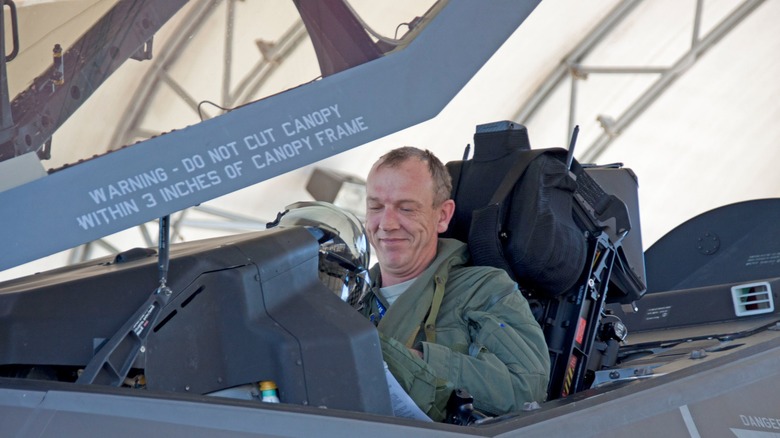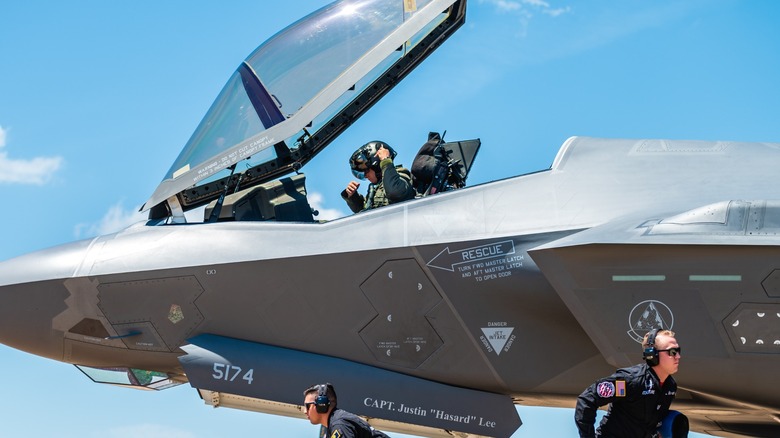Why The F-35 Canopy Closes From The Front
The F-35 Lightning II is a remarkable 5th-generation stealth fighter and one of the most advanced aircraft in the world. There are three models flown in the United States: The F-35A, F-35B, and F-35C. Each is slightly different, as the A-model operates for the Air Force, the B-model is used by the Marine Corps, and the C-model is flown by the Navy. Of particular note is the F-35B, which has a unique design in its ability to conduct short takeoff and vertical landing (STOVL).
This allows for its launch and recovery on small ships or in austere environments. This feature, above all else, is the reason why all three models of the F-35 have a canopy that closes from the front. On nearly every other fighter in the world, the canopy hinges behind the pilot's head. You've likely seen it countless times in movies like "Top Gun."
To operate as an STOVL aircraft, much of the equipment that normally fits behind the canopy had to be moved toward the front of the plane, primarily in the nose. This is because the F-35 uses rotatable nozzles to direct its thrust downward to hover, and doing so requires the aircraft to open a hatch fitted just behind the canopy. Because it would be costly to design all versions of the F-35 with different canopy orientations, the decision was made to streamline the design and make all variants open and close from the rear.
The canopy's placement and STOVL capabilities combine into a powerful fighter
The F-35B Lightning II's ability to take off and land vertically is similar, but far more technologically advanced than that of the AV-8B Harrier II Plus. Like any part of the F-35, the canopy is a technological marvel in and of itself, so don't think of it as a mere glass shell that protects the pilot. It can withstand the impact of a four-pound bird-strike at 552 mph, and it's shatter-resistant, thanks to its coating, which also provides additional stealth protection. Pilots don't even look through it, and instead see an image of their surroundings with better detail and more precision than a pilot's Mark I eyeballs ever could.
Given the technology packed inside, it's no wonder a second or third model wasn't produced for the non-STOVL variants of the F-35. According to Hasard Lee, a former fighter pilot who operated the F-35 during his career in the Air Force, the aircraft couldn't conduct STOVL operations with the canopy reoriented in the opposite direction, which you can see in this video he posted on YouTube:
Despite flying the F-35A for the Air Force, Lee's aircraft had the same canopy configuration, which he calls unique among other aircraft. Technically, it's not unique, though it is among American fighters. Others that have a front-hinged canopy include early models of the former Soviet Union's MiG-21, the Turkish KAAN, and the somewhat comparable Chinese J-35, operated by the People's Liberation Army Air Force. Despite these outliers, a rear-hinged canopy is the dominant option used in most fighter jets' construction.

